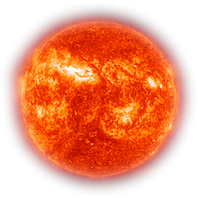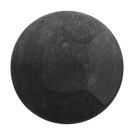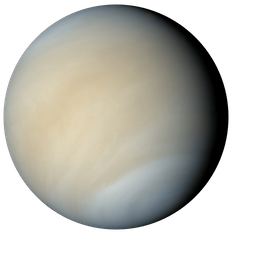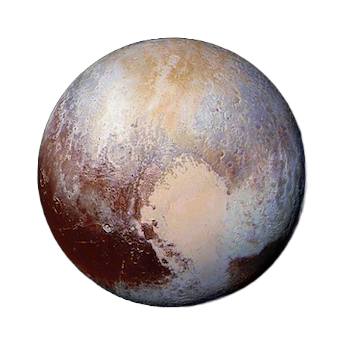Important Terms to Know
Click to expand
Finding Planets & Other Solar System Objects
The Sun, Moon, one asteroid, and 6 of the 7 observable planets can even be seen with our naked eye. Finding most of the planets is easy because they remain the brightest objects in the night sky, and you can consult the internet or other astronomers for reference.
However, for locating dimly visible objects like Neptune or asteroids, we’ll need some visual aids that are updated to show the position of what we’re looking for around the date we are currently trying to observe it, as objects in the Solar System move in the night sky, and often quickly.
Printed star charts in astronomy magazines will work, but the best solution I’ve used is a planetarium tool, like Stellarium for a computer, or a phone app like SkySafari. We can also use these to control computerized telescopes, which automatically find what we’re looking for after a brief initial alignment procedure.
When can I see Planets?
Mercury and Venus are best visible around their greatest elongation dates, which we’ve listed in our article on observing Mercury in detail and our article on observing Venus.
The other planets, dwarf planets, and asteroids are best visible at or around opposition, though it’s only of special importance for Mars. Mars reaches opposition once every 26 months and we’ve outlined the dates in our article on observing Mars.
Jupiter and Saturn reach opposition yearly but slowly track east across the sky, appearing in different months of each year.
The ice giants Uranus and Neptune are mostly stationary, reaching opposition in September, November, and July for the foreseeable future, respectively. The outer planets and Pluto can be seen for months before and after opposition, so exact timing isn’t crucial.
Each apparition starts with the planet appearing in the sky before dawn and gets brighter and brighter until opposition. After opposition, a planet rises earlier and earlier before sunset before eventually becoming lost in the Sun’s glare on the opposite side of it from us, reaching inferior conjunction, and eventually re-appearing in the pre-dawn sky a couple of months later.
How Good of a Telescope Do We Need to See the Planets?
Almost any decent telescope shows me the most exciting aspects of the planets: Venus and Mercury’s phases, Mars’ polar ice cap, Jupiter’s moons and clouds, and Saturn’s ring system.
A telescope with 6” or more of aperture is something I found ideal for observing detail on Mars and Jupiter; a larger aperture resolves more detail and reveals fainter moons more easily.
Telescopes above 12” or so are usually limited by atmospheric conditions to the point that they rarely, if ever, resolve more detail on planets than a smaller telescope, though there can be exceptions.
What to Expect While Observing Planets Through Telescopes
Since the planets and fine details on the Moon are small in angular diameter compared to massive star clusters and nebulae, and planetary details are even smaller than their disks, we require not only a large telescope with high resolving power but also stable atmospheric seeing conditions, which are set by turbulence in the Earth’s upper atmosphere.
Good seeing conditions allow us to get clear images right up to our telescope’s theoretical resolution. Bad seeing blurs our view and prevents us from seeing fine detail or using high magnification.
I’ve often experienced good seeing at times of night when the air is steadiest, such as before dawn when the air has finished cooling for the night and the sun’s heat has yet to stir things up. I also find good seeing often comes when looking over large bodies of water, flat grassy terrain, the desert, or at high altitudes.
Conversely, I almost always encounter bad seeing when looking over heat-absorbing rooftops or asphalt, canyons and river valleys, and downwind of mountains.
I make sure that my telescope is collimated and has been acclimated properly to the ambient temperature; the latter means letting our telescope sit outside before we observe and/or running fans behind our telescope’s primary mirror.
I’ve myself experienced too much magnification blurring the view many times, even if conditions may handle it. An extreme magnification like 600x is something that I might use with a very large telescope a few nights a year—not a useful power for a cheap 60mm refractor with plastic eyepieces, as some less-than-honest retailers claim. Even 300x magnification is often too much for many targets even under fairly decent seeing conditions, as well as exceeding the limit of 6” and smaller telescopes anyway.
It’s important to note that even under good seeing conditions, you’re unlikely to see as much on the planets as might be photographed with even the exact same telescope you are using. The reasons are twofold:
- Firstly, taking videos and “stacking” them can eliminate the effects of even the smallest amounts of bad vision.
- Second, photographs can be enlarged and post-processed to increase contrast and thus show more fine detail.
The fun is in seeing the planets for yourself with a telescope that you use. If the sights you’re after are considered a challenge by many astronomers or are transient in nature like eclipses, planetary weather, or comet outbursts, then it’s even more fun.
Observing the Sun

Solar observing requires taking safety seriously.
I’d never point an unfiltered telescope at the sun and only use filters that attach to the front of the telescope or special, purpose-built solar telescopes with permanent filters and etalons built in. I’ve never used filters that secure to the eyepiece or attempt to use an otherwise-unfiltered telescope with sunglasses, eclipse glasses, or welder’s glass.
I also never use an open-tubed telescope, even with a shroud, for solar observing.
The only time it is safe to observe the Sun unfiltered is during the few minutes of totality during a total solar eclipse, when I can take off my filter and see the otherwise-invisible corona and solar flares safely.
I use white-light solar filters that allow me to use regular telescopes to see the “surface” of the Sun known as the photosphere, and pick out sunspots and the granular convective cells, which can move and change over a period of minutes. I find a white-light filter is also great for observing eclipses during the partial phases. I know that very large sunspots can be seen with just eclipse glasses and your eyes or filtered binoculars.
Dedicated hydrogen-alpha solar telescopes show solar flares and prominences, as well as sunspots. Calcium-K telescopes also exist, which can show us details on the Sun surrounding sunspots in higher contrast than white light or hydrogen-alpha.
Observing the Moon
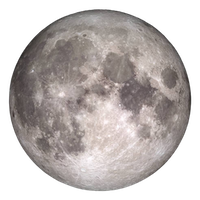
We can observe the moon’s craters even through binoculars, and even the worst telescopes show huge craters and mountain ranges. It’s nearly impossible for me to go into all the details here.
Lunar details we can see include craters, crater chains, craters within craters, mountains, ridges, mountain peaks at the center of craters, “domes” (extinct shield volcanoes), and maria (the smooth “seas”—actually frozen volcanic flows—which are the dark gray patches seen with the naked eye).
Large telescopes can reveal progressively smaller details on the Moon during good atmospheric conditions, though you won’t be able to see the Apollo landing sites. Very large amateur telescopes that I’ve built myself in the 20” aperture range could show individual details around 1 kilometer across at best, though narrower linear features like ridges and their shadows could be seen. Typical 4-12” aperture telescopes and typical mildly turbulent atmospheric conditions allow us to resolve details a few kilometers across at best.
The Moon’s orbit is elliptical with an eccentricity of about 6%, so its closest apparitions (perigee, but often termed “supermoons” by the media) lead to it appearing 12% larger and 30% brighter than the most distant (perigee or “micromoon”), but compared to a more average full Moon a few percent increase in size and a 10-15% increase in brightness are hardly noticeable.
The Moon is tidally locked to the Earth, making one spin per orbit and thus having the same side face us. The far side is not “dark” and receives just as much sunlight as the one we see, however. 9% of the lunar far side can be seen with telescopes—albeit partially—when the Moon’s rotation lags behind its elliptical orbit. While at an extreme angle, I can observe the rims of a few craters and other features.
The Moon also experiences eclipses, though not in every orbit due to its inclination of a few degrees relative to the Earth’s orbit around the Sun. During a lunar eclipse, the Moon is in the Earth’s shadow and appears to gradually dim or go “missing” before turning a crimson red to a copper brown color from the tiny amounts of sunlight still reaching it, bent and tinted by the Earth’s atmosphere. The Moon passing in front of the Sun creates a solar eclipse; the Moon cannot cover the Sun’s disk fully when it is at apogee and thus creates a “ring of fire” in an annular eclipse, while the duration of totality during a total eclipse is largely dictated by the Moon’s proximity to Earth—longer ones occur near perigee.
Observing Mercury
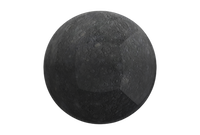
Mercury is the closest planet to the Sun, with an elliptical orbit ranging from and is never very high in the sky. It’s also the smallest true planet, slightly bigger than our Moon. However, at magnitude 1 to -1, Mercury rivals bright stars and other planets in brightness, and I find it usually easy to pick out with the naked eye when it is high in the twilight sky. I best see Mercury when it’s at as high of an angle from the Sun as possible, which occurs at periods known as greatest elongation a few times a year, lasting no more than a week.
Most good telescopes I use reveal Mercury’s phase, although little else, as the planet lacks any geological features that contrast much against its gray surface, and it appears rather small in angular size.
I’ve also observed Mercury transiting in front of the Sun, essentially creating a mini-eclipse for us, at least twice every two decades, with the next transits being in November 2032 and 2039. Mercury appears at its absolute largest during transits owing to its proximity to us, and even the smallest telescopes I’ve used show its disk easily.
Observing Venus
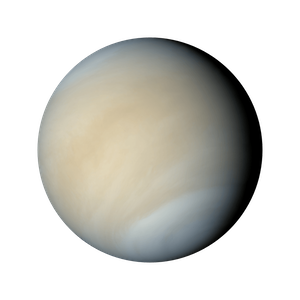
Venus is the second-closest planet to the Sun and the closest to Earth, as well as being the most similar physically. Venus’ atmosphere chokes the planet with searing heat and acidic rain, as well as obscuring its surface. However, the phase of Venus is a beautiful sight with telescopes and even binoculars, owing to its huge angular size, which is larger than that of any other planet and can even exceed 1 minute of arc (or 1/30 of the angular size of the Moon).
As somewhat of a skilled observer and astrophotographer, I can pick out faint dark striations in Venus’ cloud layers, though this is best done with large telescopes and color filters. I know some people have seen the “ashen light,” which is when the night side of Venus seems to glow. This is often thought to be a myth, like Bigfoot, but it could be caused by lightning or excited gas particles in Venus’ upper atmosphere.
Venus is the second-brightest object in the night sky after the Moon, peaking at magnitude -5 and usually well above magnitude -3; only Jupiter, Mars, and orbiting space stations can ever get even close to being as bright.
Venus is best seen during its greatest elongation, though it is far enough from the Sun in the sky that we can see it in the evening or pre-dawn sky for months at a time before sinking too low, either behind the Sun or between us and the Sun, to be viewed.
Like Mercury, Venus also transits in front of the Sun, with its disk appearing so large that it can be viewed with binoculars or even eclipse glasses alone. However, the last of these transits occurred in 2004 and 2012, with the next ones being in 2117 and 2125, so the likelihood that you will get to see one if you are currently reading this article is low.
Observing Mars
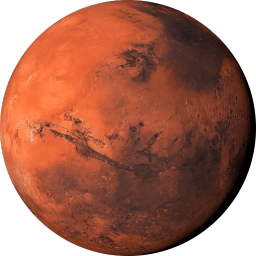
Mars is quite a bit smaller than the Earth or Venus, being only slightly bigger than the Moon and Mercury. Its orbit varies nearly 20% in its distance from the Sun, causing a large difference in its perihelion and aphelion distances of 1.38 AU and 1.67 AU, which is an interesting temporary phenomenon that has probably only been the case for a few tens of millennia. Mars’ orbit is usually circular on long time scales. As a result of its elliptical orbit, Mars is best viewed not only at opposition but also when opposition occurs close to perihelion, which occurs once every 15-17 years. The opposition itself only happens about once every 26 months, because it takes Earth a while to “catch up” to Mars, which moves around the Sun at about the same speed but slightly slower than Earth, before it quickly passes it.
At its best and brightest during perihelic oppositions, Mars is only 0.38 AU away, reaches an angular size of 25 arc seconds—about half the greatest extent of Jupiter and Venus—and has a brightness comparable to either at magnitude -3. At the worst oppositions around aphelion, Mars is nearly twice as far away from us at 0.67 AU, reaches half the angular size at only 13 arc seconds, and barely peaks above magnitude -1. Mars also quickly recedes in distance from us after opposition, and at its farthest, it appears as a reddish speck just a few arc seconds across.
Even the smallest of telescopes can usually show Mars’ polar ice caps when it is within 1 AU or so of us—the minimum distance at which it’s worth even bothering to observe. Larger telescopes reveal dark patches of sand, once thought to be growing vegetation as it grew, shrank and moved across the planet’s surface (it’s of course actually just caused by wind). Around opposition, 8-10” or larger telescopes can reveal a few actual geological features on Mars, such as the Olympus Mons volcano or Valles Marineris canyon. Mars also shows a slight gibbous phase when it is high in its angle relative to the Earth and Sun; the effect is most pronounced usually around halfway between opposition and solar conjunction (when it passes behind the Sun out of view). Mars’ moons Phobos and Deimos – tiny rocks very close to the planet – can be observed with fairly small telescopes but require specialized observing techniques and timing due to Mars’ brightness and glare, and are thus out of reach of most observers.
Observing Jupiter
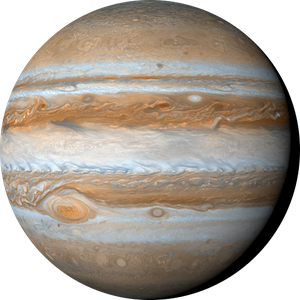
Jupiter is the biggest planet, the most massive, and the brightest planet in the night sky after Venus and occasionally-brighter Mars. Jupiter’s orbit is slightly eccentric, taking it from 4.9 to 5.5 AU from the Sun, which combined with Earth’s own orbital distance and angle means that its apparent brightness varies from magnitude -3 to -1.7 and angular size varies from 30 arc seconds to 50 arc seconds, though for both of these the value is usually close to the median and thus timing is not as important as with the inner rocky planets. Jupiter’s opposition occurs every 13 months, so every year it moves by around 1 month later and 1/12 of the way across the sky.
Through binoculars or a finder scope, Jupiter’s four large moons (Io, Europa, Ganymede, and Callisto, known as the Galilean moons) can be seen. All four are bigger than our own Moon, with Ganymede and Callisto being a bit larger than Mercury. A telescope makes the job of spotting Jupiter and its moons even easier. Even a small one will reveal the shadows of all four moons when they transit in front of Jupiter. Owing to their low brightness and contrast in color relative to Jupiter itself, the moons themselves are often harder to see than the shadows during a transit, usually requiring a 6” or larger instrument and steady atmospheric conditions to resolve. Around opposition, the shadows of the transiting Galilean moons are invisible during transits as they are directly behind them from our point of view; higher angles bring them further away from the moons’ disks.
10-12” and bigger telescopes can reveal Galileo Regio, a brown spot on Ganymede, along with showing that Io’s poles are a darker shade of yellow-orange than the equator. Callisto and Europa do not show detail. Jupiter has other moons, but all are small asteroids, either far from the planet and hard to find without a star chart or close and hidden in its glare. Either type requires a large telescope.
Jupiter itself has colorful cloud bands and storms, such as the Great Red Spot, which can be seen even with fairly small telescopes, though the Great Red Spot is best seen with a 5” or larger instrument, and larger telescopes will reveal more detail and bring out more vivid colors under suitable atmospheric conditions. Storms on Jupiter come and go, and the cloud belts change size, color, and shape over time.
Observing Saturn
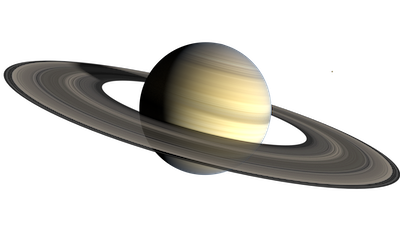
Saturn is similar in physical size to Jupiter, and the highly reflective rings span twice as far, but it is still dimmer as it is nearly twice as far from the Sun (9–10 AU) and thus receives only a bit over ¼ as much light. Saturn’s apparent magnitude varies from -1.1 (about as bright as Sirius or Jupiter at their dimmest) at perihelic oppositions with the rings at full tilt to about magnitude 1 (on par with many bright stars) when the rings are edge-on and Saturn is at its furthest away. The rings of Saturn are, of course, a highlight in any telescope (or binoculars with magnifications of 20x or greater). The rings vary in angle since Saturn has a similar axial tilt to Earth’s (around 27 degrees vs. our 23.5 degrees), and this influences their brightness as well as the visibility of gaps in the rings.
For brief periods every 15 years, Saturn’s rings can appear edge-on, and their razor-thinness makes them virtually disappear; the next of these ring plane crossings will be in 2025. The Cassini Division (named for the rings’ discoverer) in the rings can be resolved with a small telescope most of the time; the Encke Gap is visible with 8” and larger instruments under very steady skies, along with the even more difficult Maxwell Gap.
Saturn itself is pretty bland-looking in a telescope, with orderly tan-brown cloud belts and gray-blue poles. Occasionally large whitish storms can appear in the atmosphere of Saturn; these were thought to occur every 30 years, but this prediction failed to hold for 2020.
Saturn features a half-dozen moons; Titan, bigger than Mercury and covered in a hazy nitrogen atmosphere, is visible in binoculars and appears as an orange-gold disk in large telescopes. Smaller moons Rhea, Tethys, and Dione are visible in 4” or larger telescopes, along with more distant Iapetus when its lighter face is pointed towards Earth. Iapetus transits in front of Saturn in years prior to and after ring plane crossings owing to its orbital inclination, and these can be seen with a 16” or larger telescope. Transits of the other moons occur around ring plane crossings. Titan’s shadow and disk (which appears nearly as dark as the shadow itself owing to Titan’s smoggy atmosphere) can be seen with 10” or larger instruments during these; the aforementioned trio’s transits can be seen with 16” or larger telescopes.
Dim and tiny Mimas and Enceladus hug close to Saturn and are best seen with 8” or larger instruments, while sponge-shaped Hyperion can be seen with a 12” or larger telescope. They are too small to resolve as anything but star-like points, even during transits in front of Saturn. Like Jupiter’s, dozens of other, tiny moons orbit Saturn within the rings and in a halo beyond Titan, but are out of reach of backyard telescopes.
Observing Uranus
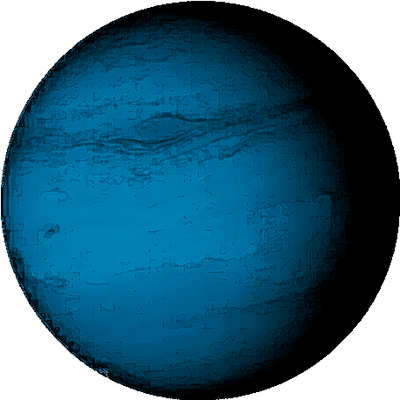
Uranus can be seen with the naked eye as a fairly conspicuous 5th–6th magnitude “star” under suburban or darker skies. Binoculars or telescopes will always at least be able to show Uranus regardless of conditions. Uranus reaches opposition around mid-November until the 2030s.
Uranus lies 18–20 AU from the Sun and has an apparent diameter of 3.3–4.1 arc seconds. It has an axis tilted 98 degrees relative to its orbit, resulting in decades-long periods of “seasons”—”summer” and “winter,” which consist of times where one of its poles is pointed towards the Sun and the other is shrouded in darkness. It is currently almost northern “summer” on Uranus; the solstice occurs in 2028.
Uranus’ naked-eye visibility has led to its being cataloged as a star by the ancient Greek astronomer Hipparchus, and by several other astronomers right before the invention of the telescope. When William Herschel discovered it in 1781 with a homemade 6” telescope, multiple astronomers had already somehow observed Uranus and yet somehow overlooked its nature with telescopes. Uranus’ blue-green disk is visible with 6” or larger telescopes at magnifications of 150x or more. Despite its seemingly blank appearance in Voyager 2 photos and pop culture, Uranus actually has some faint cloud bands, the subtle features of which can be detected with 8-10” or larger telescopes as shading towards the equator and poles.
Uranus has many moons, but only four are visible with amateur telescopes. Their order of difficulty descends pretty much directly in order of their distance from the planet, as their sizes gradually increase and they get further from Uranus’ glare. Ariel and Umbriel are similar to the smaller round moons of Saturn in size. They are best seen with 12” or larger instruments at magnitude 14.5, while Titania and Oberon, about half the size of our Moon, hover around magnitude 14 and can be seen with 8” or hypothetically even 6” instruments, but a 10” or larger instrument is best. The moons do not go behind Uranus or change significantly in apparent distance from the planet when it is near the winter/summer solstices, like the present day.
Observing Neptune
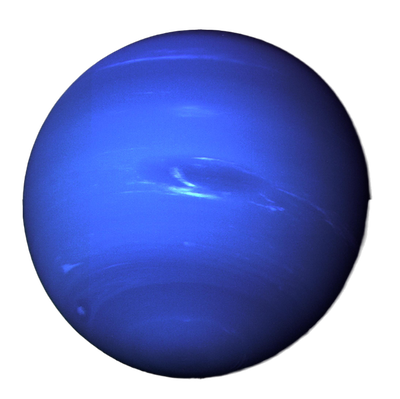
Neptune is technically visible to the naked eye under extremely dark skies. But in reality, you need binoculars or a telescope to see Neptune because it isn’t very bright. At its brightest, it is only magnitude 7.7. Neptune was, amazingly, observed by Galileo Galilei in 1612, shortly after he invented the astronomical telescope. Galileo even noticed that it seemed to move a little bit in the sky, but he thought it was just an error in his observations. Galileo’s telescope could not resolve its disk in any case, as his was about as powerful as typical binoculars. Neptune’s disk is barely bigger than 2 arc seconds and thus similar in angular size to the large moons of Jupiter named for him. Numerous observers after Galileo observed and missed Neptune.
Neptune’s bluish color is obvious in any telescope, and its disk can technically be resolved with the smallest instruments. However, since there is nothing for it to contrast against like the transiting moons of Jupiter, resolving Neptune clearly requires at least a 6–8” telescope and very steady skies. Neptune has a couple dozen moons, but only Triton is visible to the eye; at magnitude 13.5, it can be seen with a 6” telescope owing to its brightness and Neptune’s lack of significant glare. Triton is slightly smaller than Earth’s Moon. It orbits Neptune in a retrograde (backwards) orbit and is probably a dwarf planet like Pluto that was captured into Neptune’s orbit, throwing other large moons out of the way and explaining Neptune’s relative lack of other significant moons.
Observing Pluto
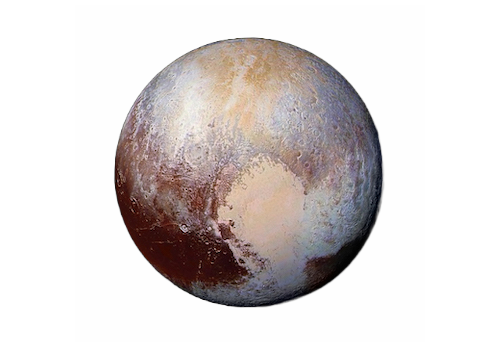
Other than Ceres, Pluto is the only dwarf planet you’re likely to see with a telescope. Pluto is hovering at magnitude 14.3 as of the time of this writing, continually getting dimmer as time goes by. As such, it requires at least a 10-12” telescope to see and appears as a star-like point regardless of how powerful a telescope you use, owing to its dimness.
Other dwarf planets, such as Makemake and Haumea, can be seen with very large telescopes. Our article on observing dwarf planets goes into more detail on seeing these faint and distant worlds.
Observing Asteroids
Asteroids are known by many to orbit in the “asteroid belt” between Mars and Jupiter, but many cross the Earth’s orbit, which can make them cause for concern if they get too close, as they may impact us in the future and have in the past, with the last big one wiping out the dinosaurs 65 million years ago and asteroids hitting Russia twice in the past 150 years causing damage to life and property. Some asteroids venture closer than Mercury, and others can go out to the orbit of Neptune. Some are “stuck” in resonant orbits ahead of or behind the planets and are known as Trojan asteroids; Jupiter has many of these. Distant asteroids can be hard to distinguish from inactive comets, and this overlap has led to a classification of objects known as “centaurs,” which are basically asteroids until they are discovered to have tails.
The three brightest asteroids were discovered in the early 1800s, before Neptune was known to exist and during a flurry of excitement after the discovery of Uranus. After several asteroids were found and they quickly outnumbered the classical planets, more scrutiny revealed their small sizes and they were re-categorized as a different class of object, similar to what happened to Pluto about two centuries later when more dwarf planets were found.
Asteroids can be named after gods or goddesses, but after the first few dozen exhausted the available deity names, they began to be given provisional designations and eventually were officially named after people, places, or pets, though they cannot be named for the discoverer and must be condensed into one word. This has resulted in names like Potato, Jamesbond, Beowulf, and Mrspock.
Ceres is the only dwarf planet closer to the Sun than Neptune, about 3 AU away on average, but it is also considered the largest asteroid and the first to be discovered. It is about half the size of the Moon. While technically visible to the naked eye, Ceres is rarely much brighter than magnitude 7 except during good perihelic oppositions, and even then it is only visible to experienced observers under dark skies. It is visible as a star-like, off-white point in binoculars or telescopes and is too small in angular size to resolve any features. Its 0.4 to 0.9-arcsecond disk can be resolved with 10-inch or larger telescopes at very high magnifications under exceptional conditions.
Vesta is the largest non-dwarf-planet asteroid, though there have been calls for it to be classified as a dwarf planet like Ceres. It is slightly smaller than Ceres. Vesta is closer to the Sun than Ceres (2.5 vs. 3 AU on average) and more reflective, and during oppositions coinciding with perihelion it reaches a brightness of magnitude 5—bright enough to be seen without much effort from suburban or darker skies with the naked eye and easily with binoculars. Even during a poor opposition, when Vesta is at aphelion, it is usually brighter than magnitude 6 and thus still fairly obvious to the naked eye under decent observing conditions. Telescopes and binoculars reveal a yellow-gold color. 10” or larger telescopes with very high magnification and steady skies can reveal that Vesta is not round but rather elongated along one axis, as its angular size is similar to that of Ceres.
Pallas is almost as big as Vesta and the largest asteroid to remain unexplored by spacecraft. Pallas appears as bright as Ceres—visible to the naked eye weakly at best but easily with binoculars—when it is close to us and near perihelion (2.13 AU), though this is rare as its elongated and inclined orbit also takes it up to 3.4 AU away as well as far above the plane of the ecliptic where most planets and asteroids reside and thus even further from us in linear distance.
Many other asteroids can be seen with telescopes as star-like points, detectable with large binoculars and telescopes. Their movement can be observed over long periods of time. Occasionally, small asteroids pass near the Earth, sometimes even closer than the Moon. These asteroids are usually only as big as a school bus or even smaller, but they are bright enough to be seen with telescopes and sometimes binoculars – though they move very fast and you’ll need minute-by-minute position information from apps or charts to know where to find them. Sometimes asteroids can also brighten from ejecting debris or gas due to uneven heating, or from collisions.
Very rarely, larger asteroids can pass near us. The next of these encounters will be with the asteroid Apophis, a 300-meter-wide rock that caused quite a scare as it was once predicted to impact our planet and cause massive tsunamis or wipe out a city or two. Apophis will pass ten times closer than the Moon and closer than many communications satellites on April 13, 2029, appearing visible to the naked eye for observers in Europe, Africa, and Western Asia and able to be spotted with binoculars from around the world. The Earth will actually alter its orbit gravitationally, preventing future encounters for a while, and NASA will be redirecting the OSIRIS-REx spacecraft to study Apophis post-encounter.
Observing Comets
Comets come from the Kuiper Belt of icy objects orbiting beyond Neptune, to which Pluto also belongs, or the Oort Cloud, a diffuse but much larger sphere of icy objects orbiting the Sun possibly as far out as a couple of light-years. Comets are icy objects that melt and form huge tails of bright gas and dust as they boil off, and solid particles are dislodged as debris. Comets have to warm up by being close to the Sun to produce tails; naked-eye visibility usually requires the comet to be closer to the Sun than Mars. Of course, comets melt over time, so the brightest ones are usually first-timers or have very long orbital periods. Debris from comets produces most meteor showers.
Comets are supposed to be named after their discoverers, though they have catalog numbers too. Since most comets are now discovered by robotic surveys, they are named after the robots, and the robots are so good that nowadays we have to refer to them with both the number and discoverer to avoid confusion. The bright “comet NEOWISE” that graced the skies in 2020 was one of many discovered with the space telescope and thus has to be referred to instead as C/2020 F3 (NEOWISE) to avoid confusion.
Comets from the Kuiper Belt are in stable orbits around the Sun unless they are kicked out by a close encounter with a gas giant planet. Thus, they have fairly regular orbital periods and are termed short-period comets. These comets don’t usually get very bright, as they’ve either exhausted their volatile materials from passing too close to the Sun or stay away from it to avoid melting, which of course also hinders brightness. As such, they are usually invisible to the naked eye except during outbursts of activity, which can cause them to brighten, or during unusually close encounters with the Earth. Binoculars can reveal many of these shorter-period comets, as can small telescopes; during good apparitions, their tails can be seen too. Outbursts or close approaches to Earth may make the comets visible easily to the naked eye, though you’ll have to keep updated on when this occurs.
The notable exception to the rule of short-period comets’ dimness is comet (1P) Halley, which can appear to the naked eye every time it re-approaches the Sun, which happens once every 75-79 years. However, Halley’s Comet has to pass close to the Earth to be visible brightly, and in 1986 (the last apparition), it did not do so; this, combined with the effects of light pollution at the time, led to a lot of disappointment. In 2061, it will be at perihelion at the same time it closely encounters Earth; assuming light pollution is not out of control, it should be a spectacular sight.
Long-period comets are generally the category to which the naked-eye-visible “great comets” belong. They usually come from the Oort Cloud, and can take tens of thousands of years to approach the Sun. Some can also come from interstellar space, presumably having formed in another star system. Depending on their orbits, some long-period comets can return after tens of thousands of years, but many either enter the Solar System on escape trajectories or are thrown out by the gravitational influence of Jupiter and the other gas giant planets.
Most long-period comets are not particularly spectacular in telescopes or binoculars, but when they are, it can be quite a show. Nowadays, they can also be discovered years before they get close to the Sun, though predictions as to brightness can often be far off and some can be duds, as was the case with Comet Kohoutek in 1974 or Comet ISON in 2012. The brightest “great comets” are visible in broad daylight, and their tails stretch across the sky. C/2020 F3 (NEOWISE) was the most recent of these, visible to the naked eye even from cities at its brightest and with a visible tail under dark skies. Great comets reveal colors and show both a gas tail and a separate dust/debris tail in telescopes; wide-field telescopes and binoculars are best for viewing them, accompanied by dark skies.



